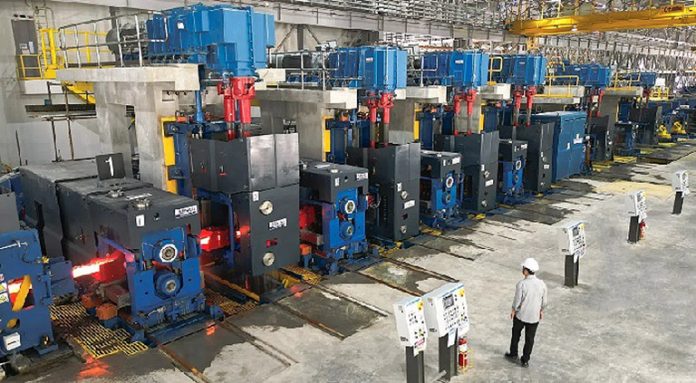- SteelAsia Manufacturing Corp shipped more than 36,000 metric tons of steel bars to Canada recently, its fifth batch of exports to the North American country
- SteelAsia chairman and CEO Benjamin Yao sees the steel exports to Canada as a break through the First World market, which demands product superior quality and performance standards
- But Yao laments the irony that the Philippines imports most of its steel needs for its infrastructure construction industry, using up its dollars and yielding job opportunities to other countries
Philippine steel producer SteelAsia Manufacturing Corp. says it has shipped more than 36,000 metric tons of steel bars to Canada recently, its fifth batch of exports to the North American country for its infrastructure construction requirements.
The latest shipment takes the total value of SteelAsia’s exports to $24 million (about P1.32 billion), which the listed company’s chairman and CEO Benjamin Yao considered as a breakthrough.
“We have broken through the First World market where quality and performance standards are the highest,” Yao said.
“We have invested in the best available technology to produce the highest-quality steel products and these shipments are our initial reward, and a validation of our reliability and capability,” he said.
SteelAsia has six existing steel mills, namely, the Calaca Works in Batangas, Meycauayan Works in Bulacan, Carcar Works and Compostela Works in Cebu, Davao Works in Davao City and Villanueva Works in Misamis Oriental.
The company has three other steel mills in the pipeline. They are the Candelaria Works in Quezon, Concepcion Works in Tarlac, and Lemery Works also in Batangas.
In June, the Philippines’ largest steel producer commissioned its Compostela, Cebu steel mill, its newest and largest facility with a production capacity of 1 million metric tons of steel bars.
The Development Bank of the Philippines (DBP) funded the project through a long-term loan of P5.7 billion granted back in June 2020.
Claiming that its steel bar production uses green methods, SteelAsia boasts of using geothermal energy to recycle steel scrap into high-value, infrastructure-grade steel bars.
“This technology not only supports the Philippines’ infrastructure program, but also promotes sustainability in steel production,” SteelAsia said.
Yao dreams of seeing the Philippines having its own integrated steel industry that will give rise to new industries and businesses, such as those that produce ships, cars, appliances and support others like construction and housing.
But SteelAsia laments the irony that the Philippines imports most of its steel requirements for its vibrant infrastructure construction industry. As a result, the country’ uses up its dollars and yields employment opportunities to other countries.
Philippine Statistics Authority data showed that the country imported $5.77 billion worth of iron and steel products in 2022, 8.8% higher than 2021’s $5.3 billion.
“In the Philippines, we export our resources such as steel scrap and iron ore, then import back finished steel products. This is a tragedy because the value and the jobs are created in another country and, in the meantime, the Philippines is import-dependent. We need job creation here, and that’s what having our own steel industry does” Yao said.
SteelAsia said its newest mill in Cebu will create 500 direct and 2,500 indirect jobs.
The company has plans to set up a P108-billion integrated steel facility in the Philippines in partnership with China’s largest steel producer, BaoSteelGroup, expanding further its capacity to produce materials used in infrastructure and heavy construction.
The deal was signed by Yao and Li Huaidong, senior vice president of Baowu Group Zhongnan Iron and Steel Co., during President Marcos’ three-day state visit to China earlier this year.
“This project will spawn new industries and wean the country from its perennial dependence on imports. It will generate about 2,000 jobs, including for professionals who, in the past, have had to work abroad and leave their families,” Yao said.





